More culturing happened recently! We had a vyshyvanka workshop and subsequently Ivana Kupala celebrations. We also visited the National Opera House to see a ballet and an opera.
Vyshyvanka, forest and fires
First, we got a lecture about vyshyvankas. Traditionally, vyshyvankas are very regional items — almost like a uniform, certain patterns and colours of embroidery identified from what village people came. Vyshyvanka could be from different materials — cheaper and a bit stiff, or more expensive and soft — depending on the wealth of the owner.
All vyshyvankas on display are collected and owned by Oles and Roksolana Hryvul. Even though the vyshyvankas are very old (and could easily belong in a museum), we were allowed to try them on for a photoshoot!

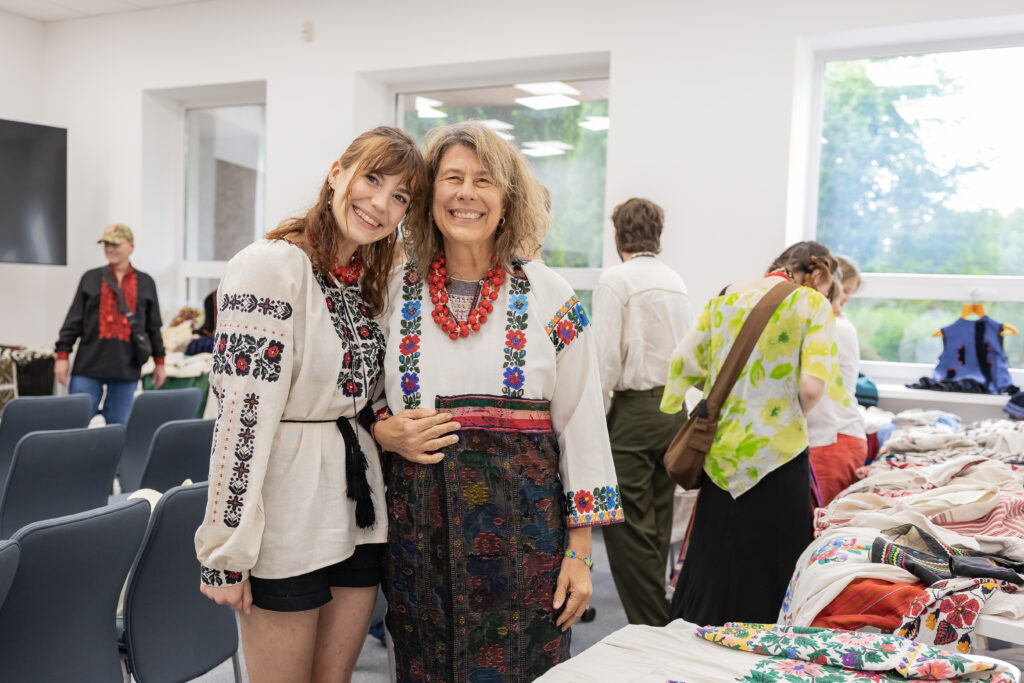

After the vyshyvanka workshop, we celebrated Ivana Kupala — a pagan festival to celebrate summer solstice with wreaths, bonfires, song and dance.

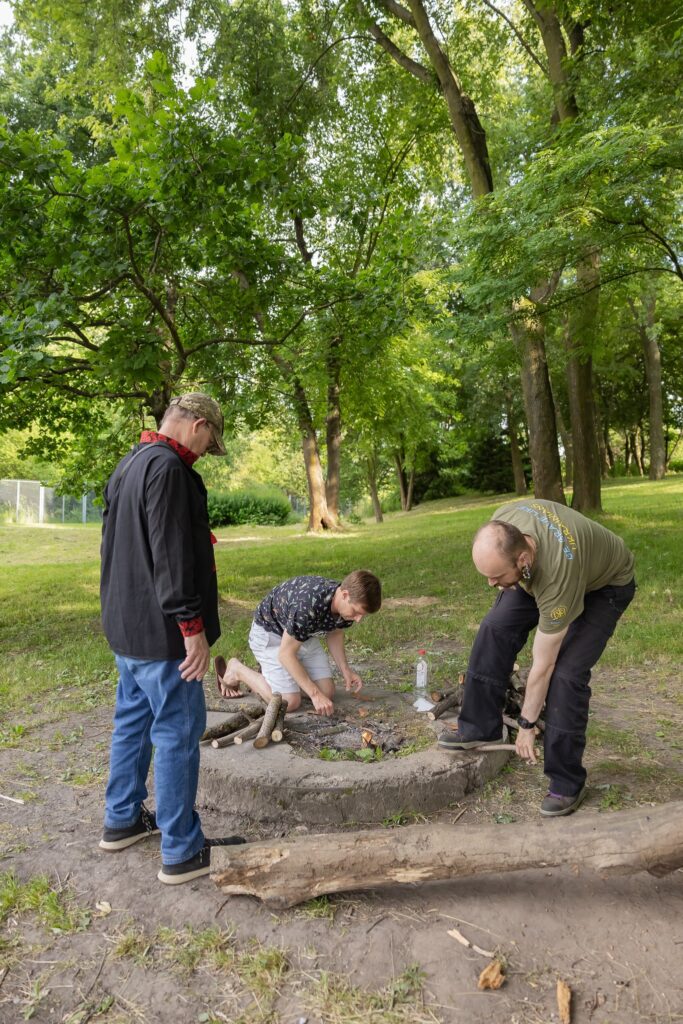
The ladies made wreaths, as per tradition. Our regular guide Ivanka was also present and made wreaths for the various men — we’re all part of her harem now.
While the ladies were constructing headgear, the men, of course, handled the hard work of fire-making — with the generous use of cigarette lighters. The fire was supposed to be ‘cleansing’ and thus promotes health. Traditionally at Ivana Kupala, couples would jump over the bonfire hand-in-hand. If couples let go of their hands while jumping, this would mean the relationship would not last. We didn’t jump over any fires — and Ivanka didn’t have enough hands to jump with her entire harem at once anyway.
We also sang some traditional songs and made some noise. There were some beautiful performances by tour guide Ivanka, our Ukrainian teacher Lesia and music teacher Mariia. Unfortunately, I just couldn’t read the Ukrainian lyrics fast enough to be of any service singing, but I tried to make some constructive noise with rice-eggs.
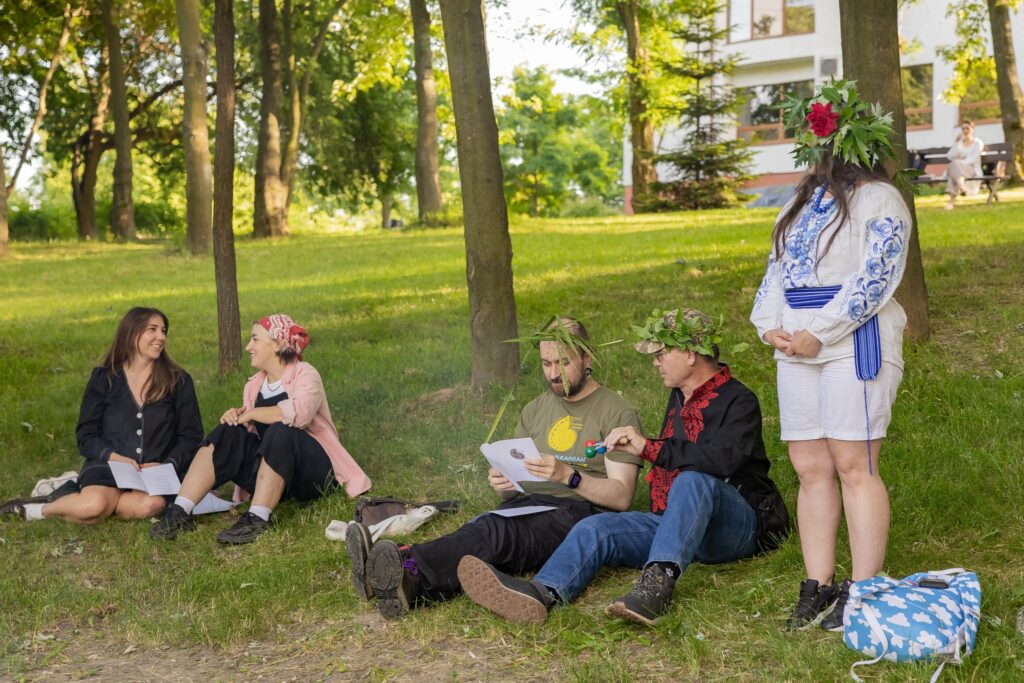
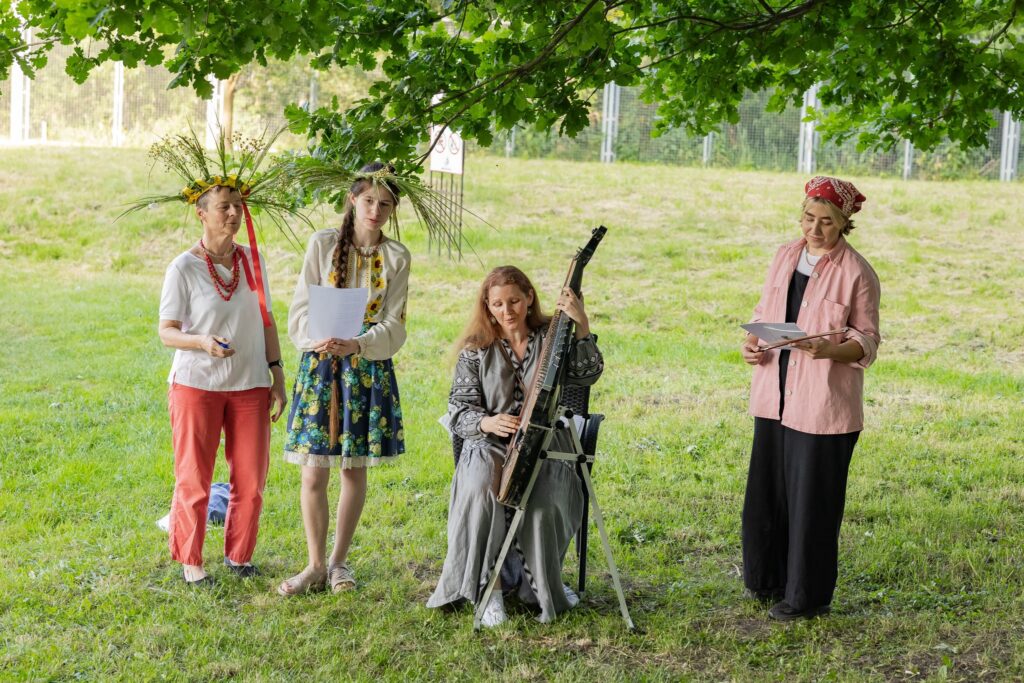
After the Ivana Kupala celebration, there was food and a performance by Draga band! We also did some traditional community dance games, such as “Rucheyok” (‘little stream’ or ‘brook’). Arbitrary couples form arches with their arms in a long line, creating a tunnel. A solo dancer weaves through, selects someone from an existing pair and drags them to front, moving the stream forward. Meanwhile, the pair that was broken leaves a new solo dancer to go to the back and repeat.
Fun fact: from friends, I learned there’s a hippy festival called Shypit (wiki-page only in Ukrainian) that also has its major celebration on Ivana Kupala (in the night of 6 on 7 juli). This party is celebrated in the Carpathian mountains, far from the all-seeing eyes of authorities, I reckon. Participants would go up mountain in a 4×4-truck, just like I did recently with Julia and her boyfriend. Julia actually didn’t know about this local Ukrainian event — which made me feel really knowledgable, in-the-know and cool for a moment 😎. Then I realised I’m not the type of person to actually join Shypit either, and I was cured again of my momentary sense of glory.
An Evening at the Ballet
As part of the first half of the course, we went to see a Ukrainian ballet performance (“Shadows of Forgotten Ancestors”) in the National Opera House in Lviv.
It was built during Habsburg times, explaining some of its grandeur — both outside and inside.
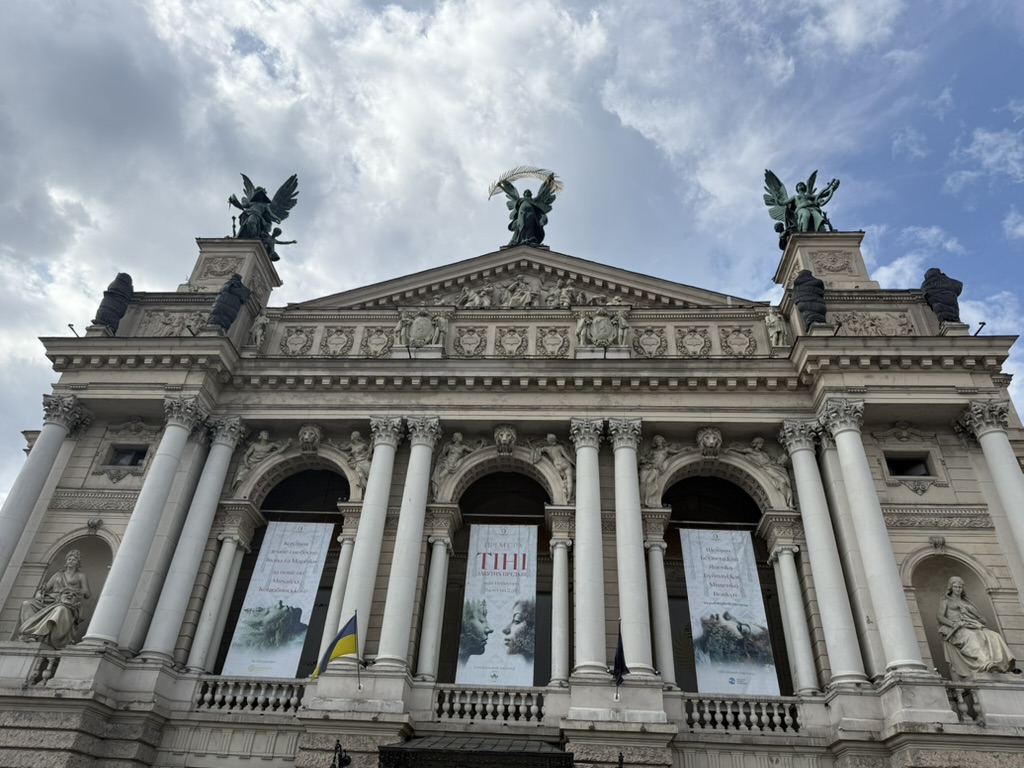
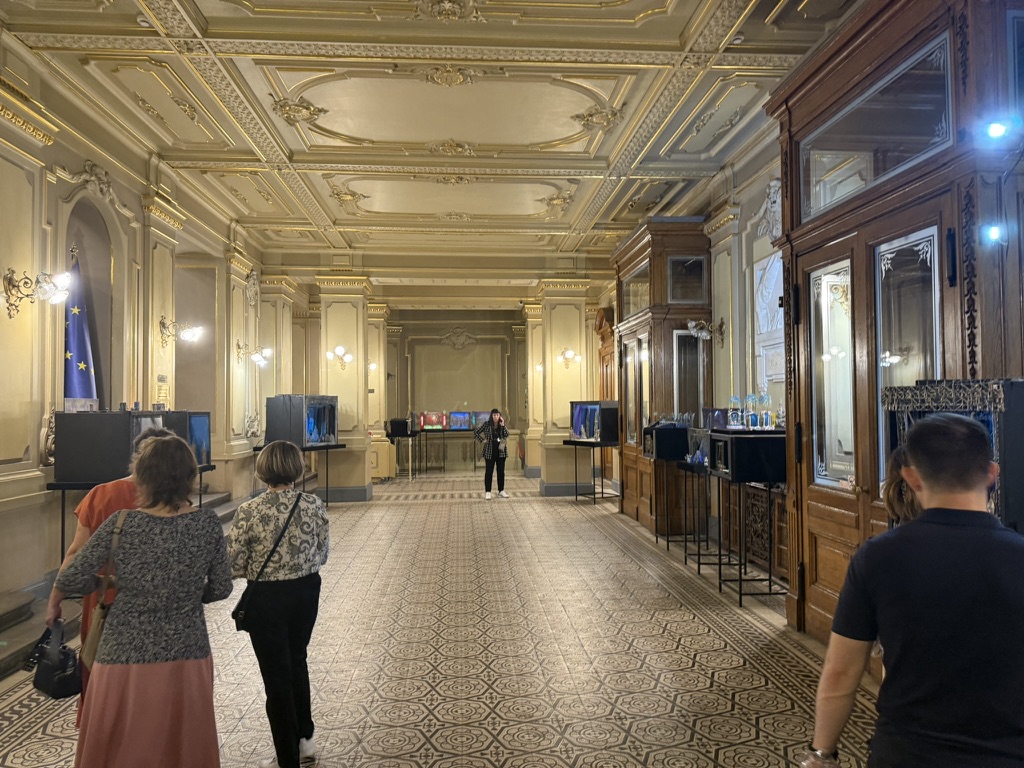
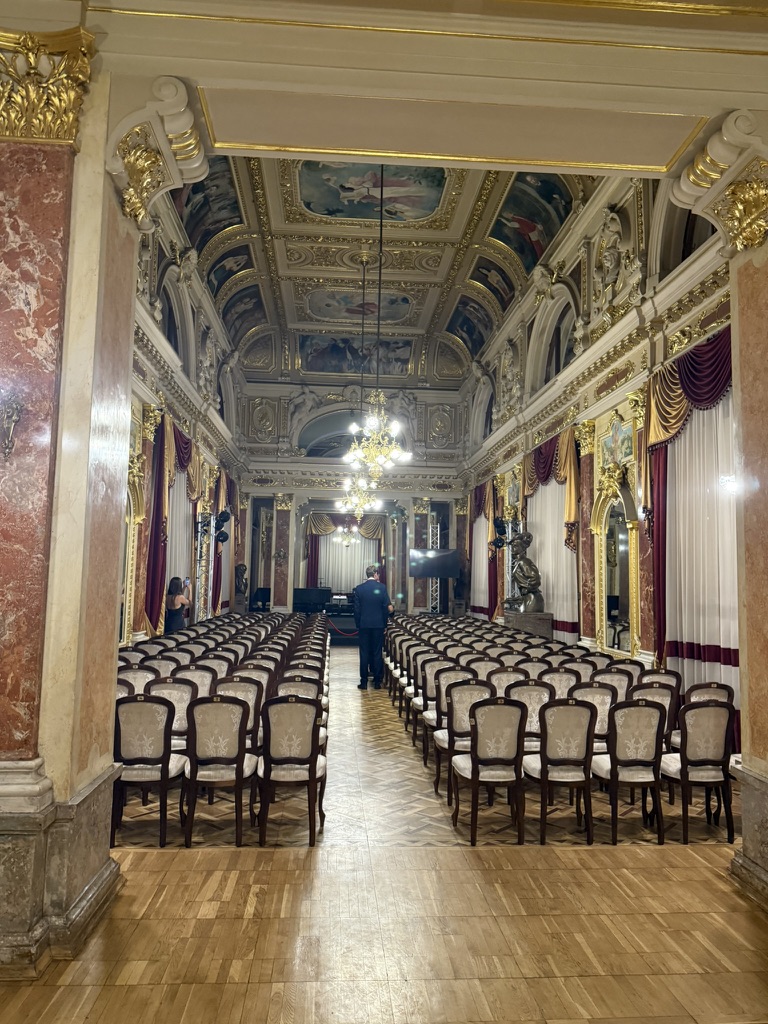
The theatre hall inside was very luxurious as well. In the top right, there’s a box seat for the Austrian emperor (notice the crown decoration)! I’m glad they didn’t remove it — the box will be most useful once I become the European Emperor.
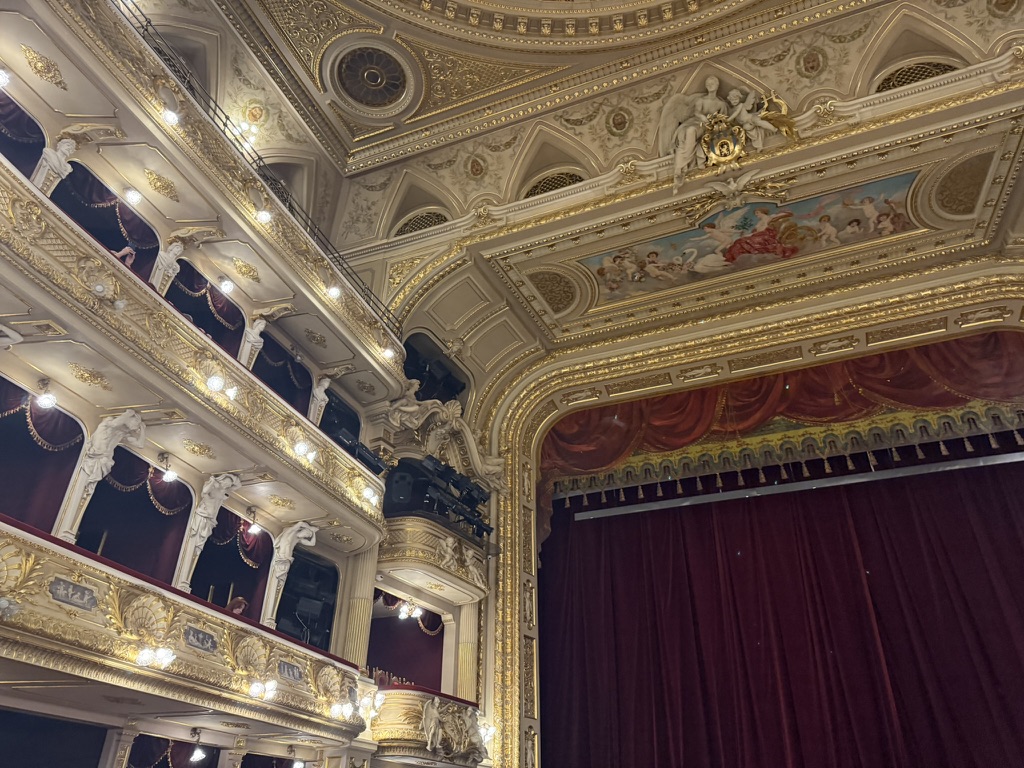
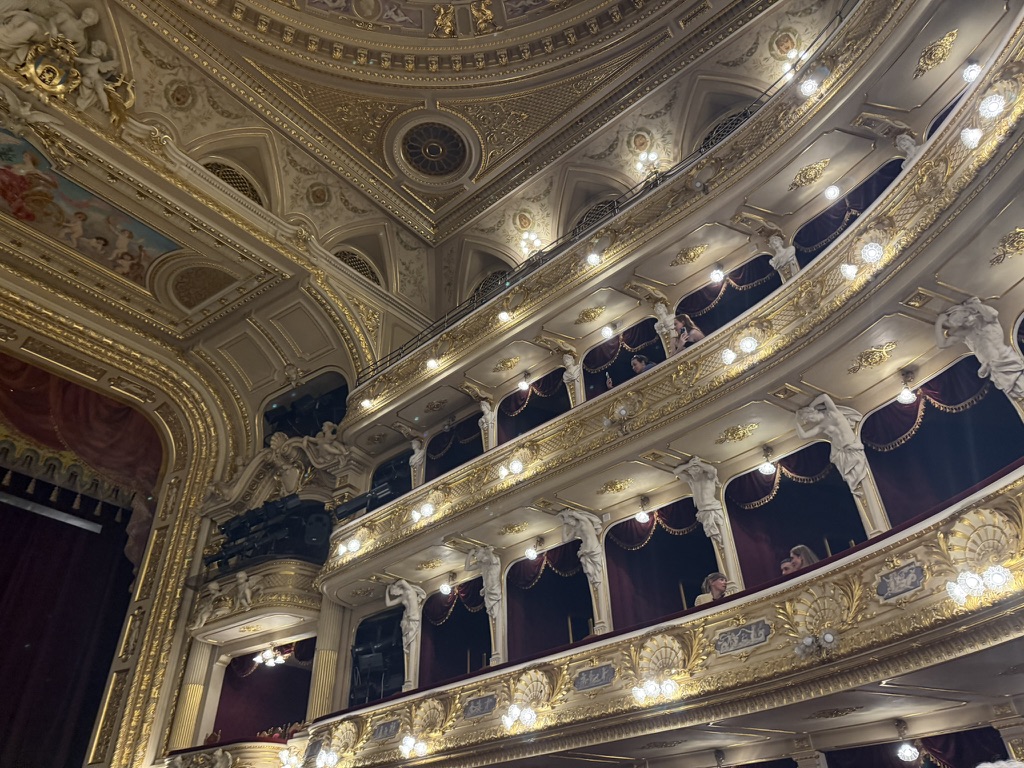
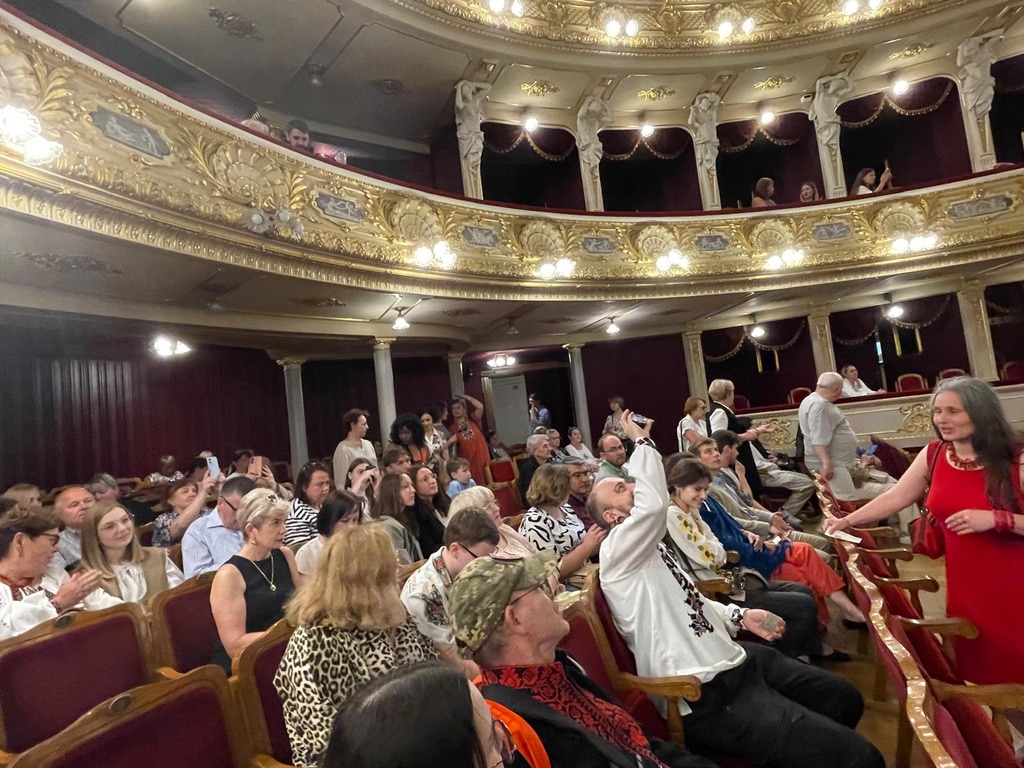
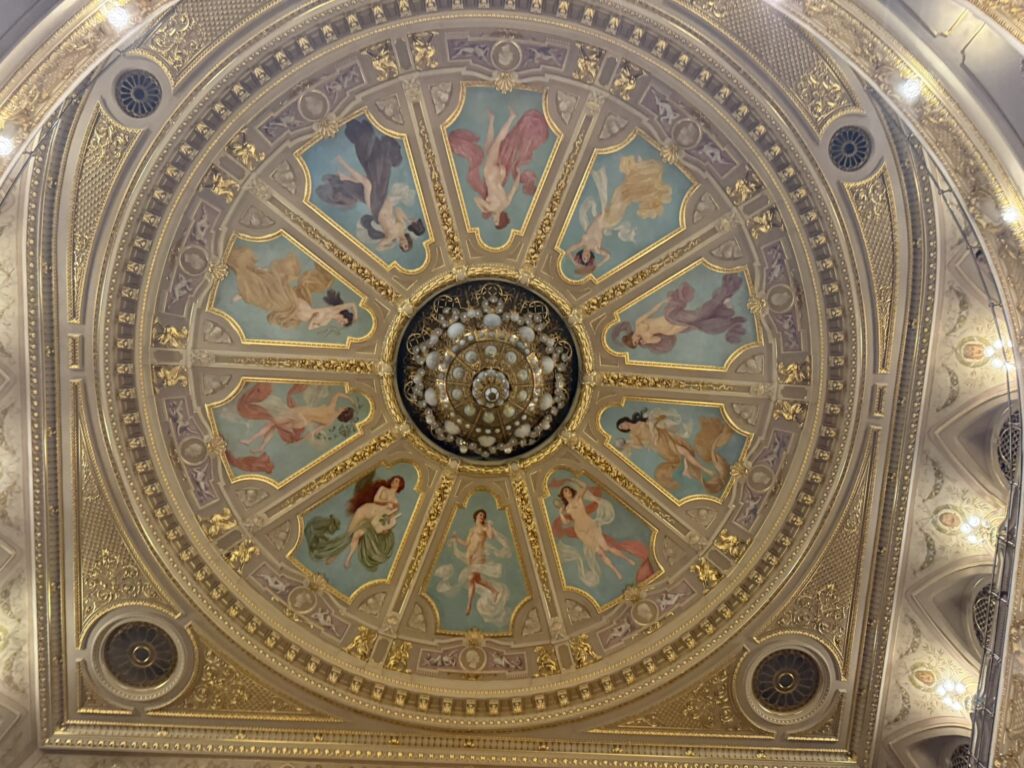
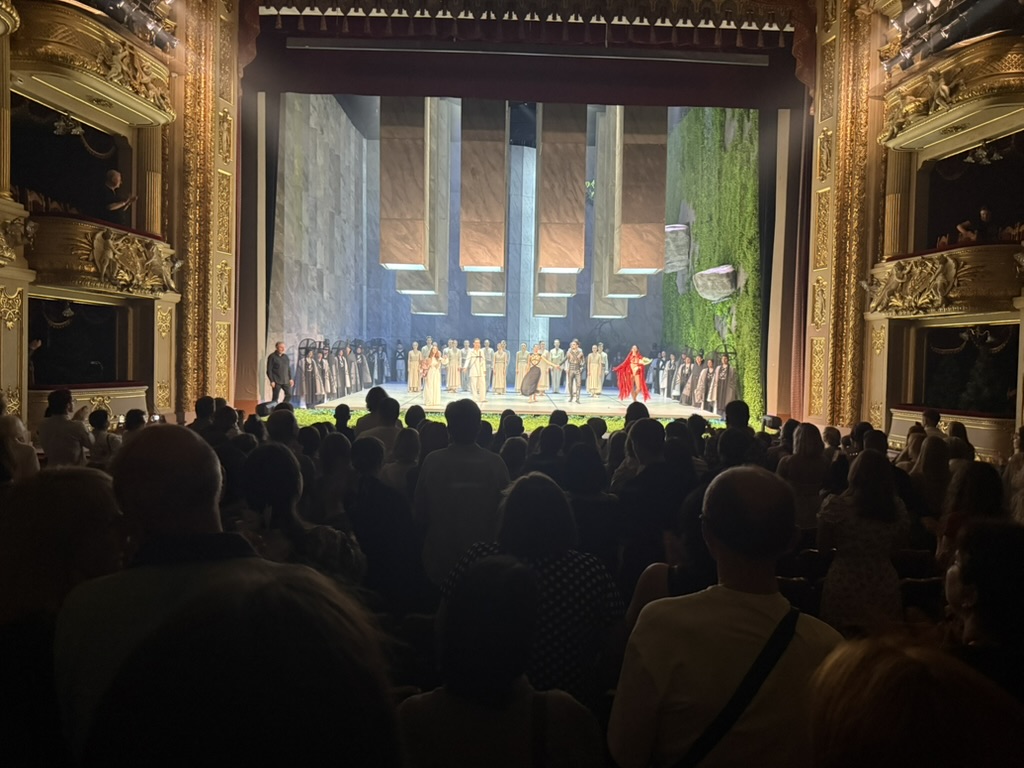
The performance itself was quite impressive, but I have mixed feelings about the story. I could understand a large chunk of the story thanks to the good performance, but the story was a too melancholic for my liking. The story was a sort of Romeo & Juliet — but she died and he lived and remarried into an unhappy marriage. His new wife then found love and happiness with another man. And eventually the Romeo died just as heartbroken as he was initially but, supposedly, found his Juliet in heaven and was happy there.
More theatrics at the opera house
Outside the official course program, some students and teacher Lesia visited the opera house recently once more — to watch an actual opera, rather than a ballet. This time we sat on the second balcony. This visit happened in the second half of the program with various new students having joined by then.
I appreciate having seen this opera and being able to read some of the Ukrainian texts on the supertitling. However, even visually the story was really complex for me to follow — even after having read the synopsis. Lesia’s explanations after the performance made a lot more sense than the performance itself. Funnily enough, some of the things I really didn’t like or understand were things in which the opera actually deviated from the book it was based on.
All in all, I’d say I got more confirmation that operas just aren’t for me, but I appreciate this experience for its novelty, Ukrainian language and the company I was with.
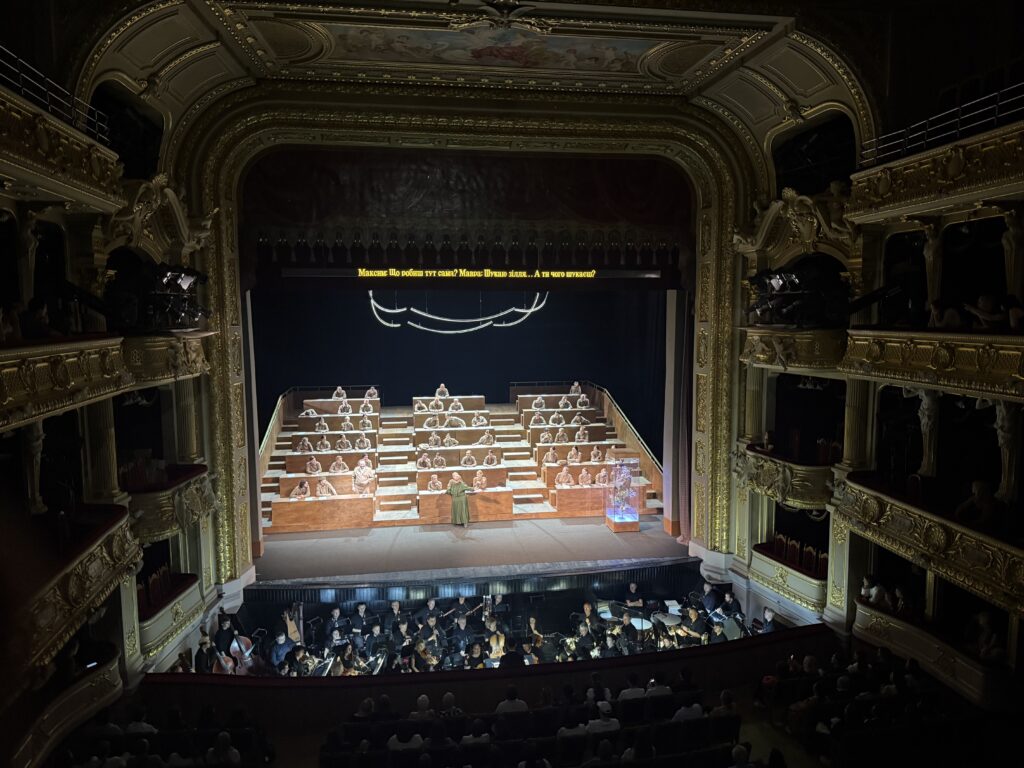
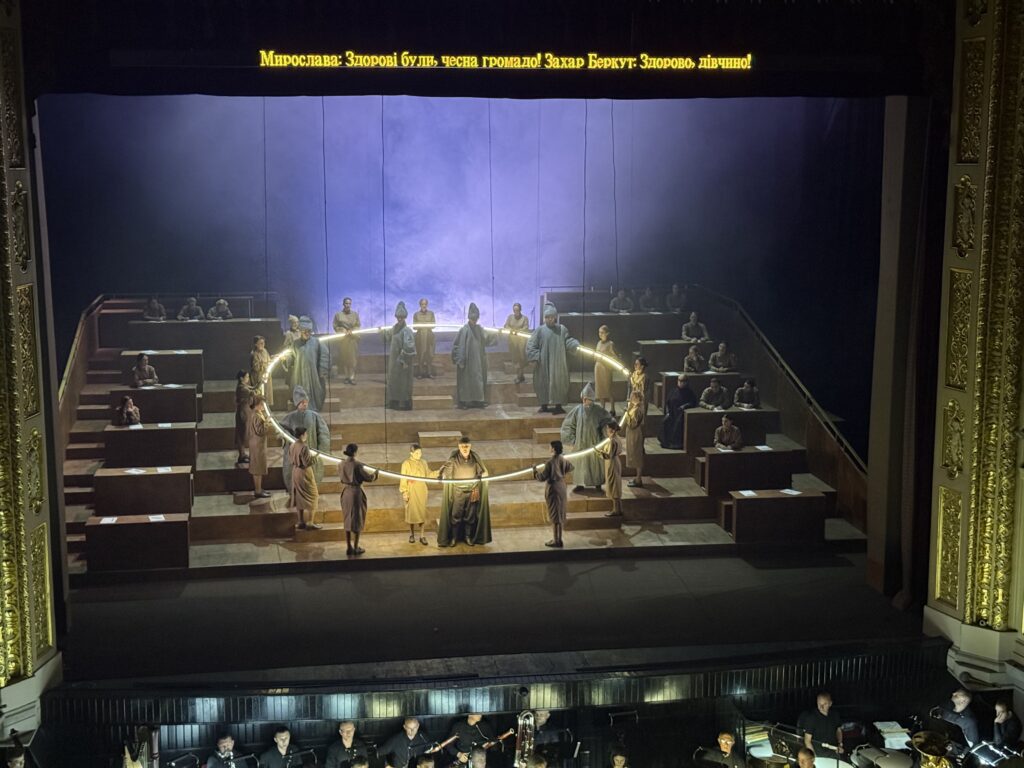
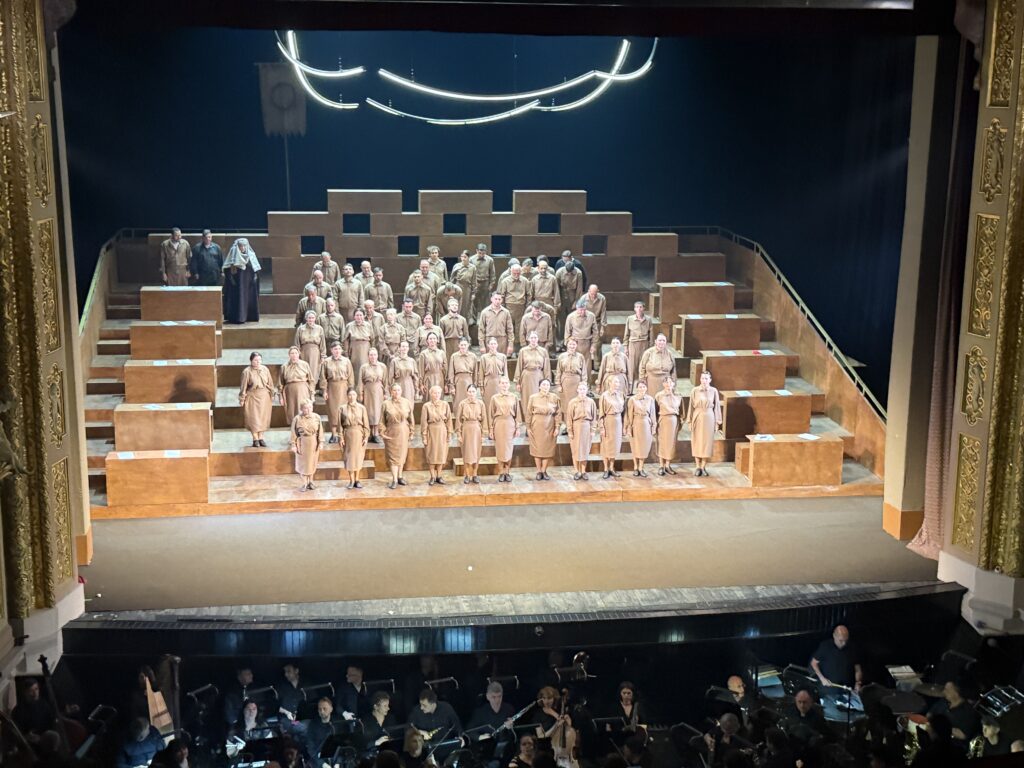
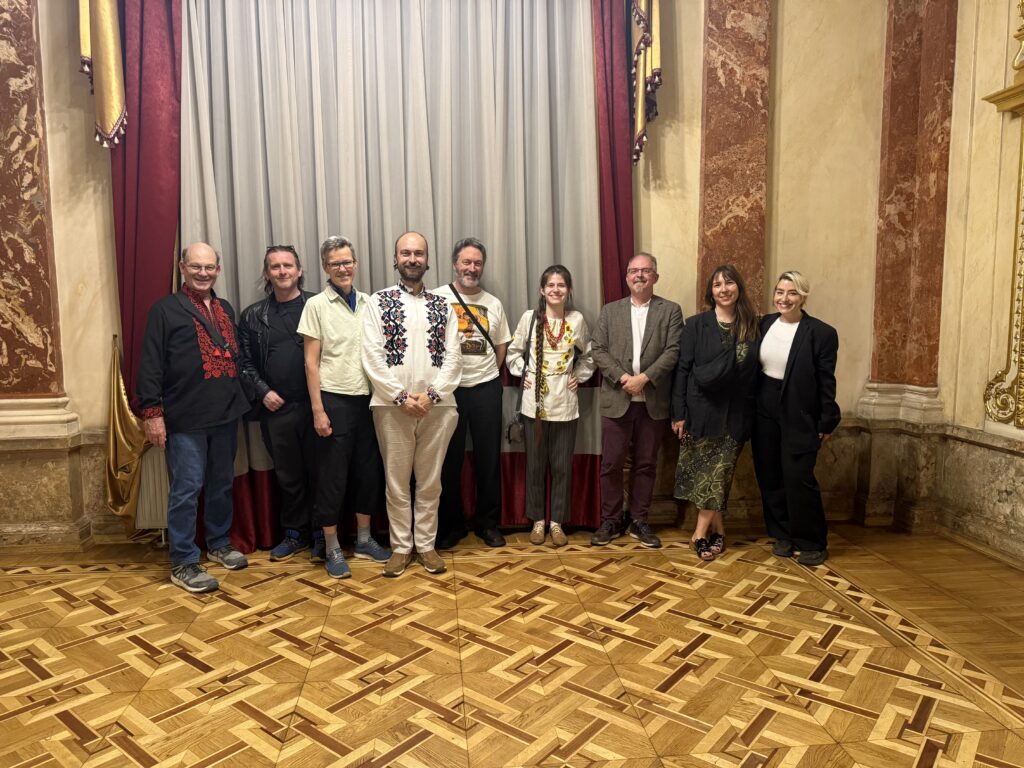

In conclusion
We’re now four weeks into the course and I’m surprised at how many novel cultural activities we still can do. Through learning the Ukrainian language and culture, I suppose I’m learning to appreciate culture (in general) a bit more as well. Some other students really enjoy these cultural activities. I think I’m still a culture barbarian at heart, who’s just happy to be with good company — which is definitely the case. However, even a barbarian must recognise the immense richness of Ukrainian culture — the Ukrainians take their arts seriously.
Shout out to Lesia, Ivanka and Mariia — thanks for guiding us through this world of culture with your immense artistic prowess!

